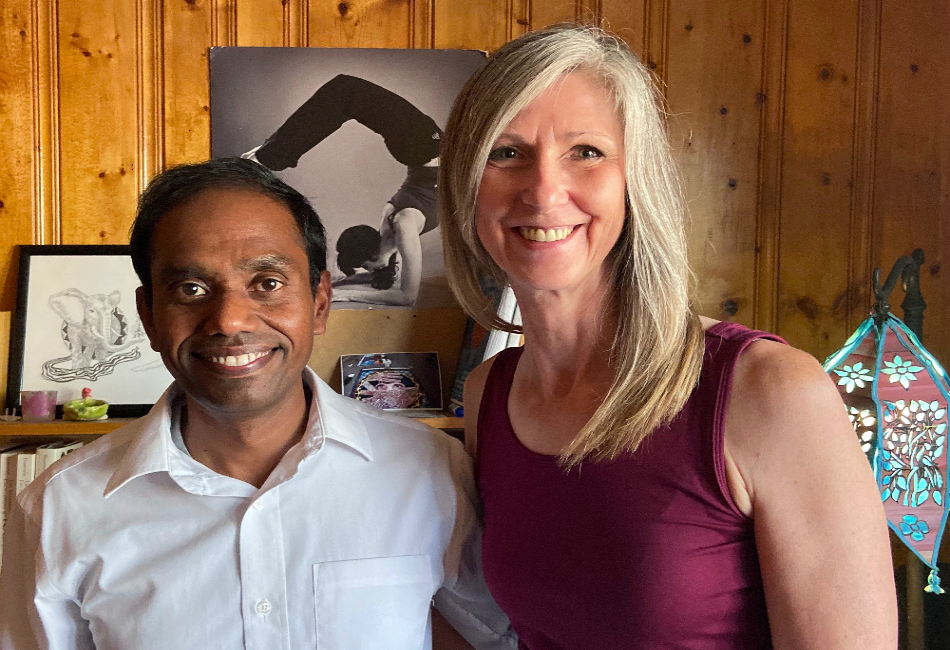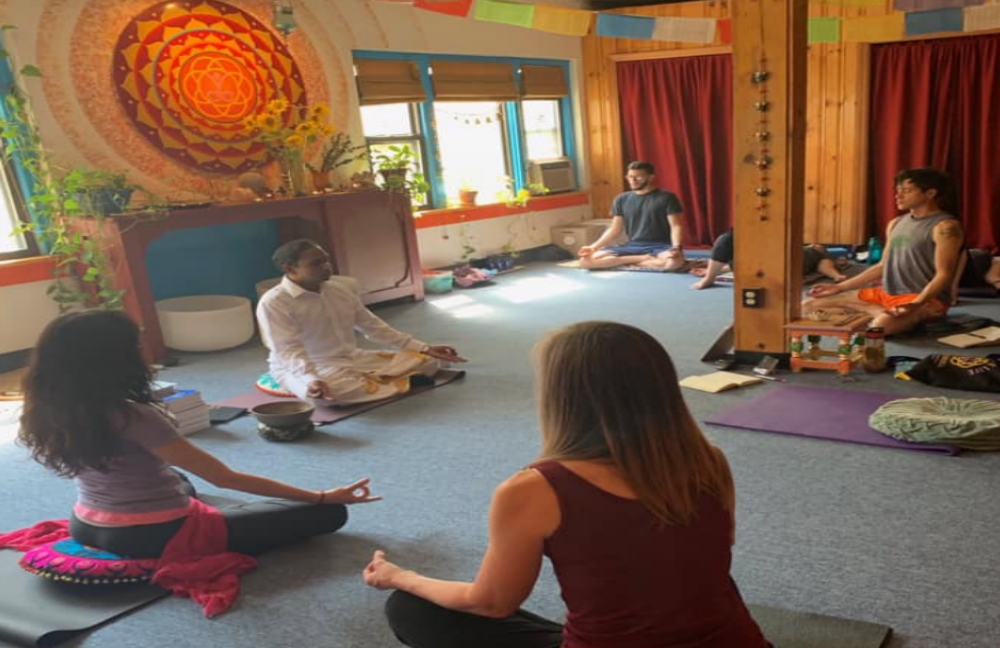Here’s one simple thing you can do to improve your health and wellness…. BREATH!
This weekend I had the honor of meeting and learning Pranayama breathing methods from Dr. Sundar Balasubramanian.
Dr. Sundar is a Cell Biology Researcher currently studying cellular and molecular mechanisms involved in resistance to cancer therapy at the Medical University of South Carolina.
He is also a Yoga Biology researcher and the Founder/Director of PranaScience Institute.
WHAT IS PRANAYAMA?
Yogic breathing, also called Pranayama, is a collection of techniques used to regulate breathing voluntarily.
“Pran” mean bio-energy and “ayama” means to control or regulation.
There are various types of Pranayama and their benefits in daily life are unlimited.
Pranayama breathing induces a strong relaxation response via vagal and parasympathetic stimulation.
As Dr. Sundar explained, such responses are causally linked to rapid changes in gene expression, particularly to those genes controlling stress, inflammation, and metabolism.
PRANAYAMA RESEARCH
Dr. Sundar explored the stimulation and detection of salivary proteins in response to Pranayama breathing practices in this first-of-its kind research.
He used randomized controlled trials to demonstrate that Nerve Growth Factor (NGF) can be increased with Pranayama breathing.
Nerve Growth Factor is a key protein in the nervous system that protects brain neurons.
Saliva is a known source of NGF.
This groundbreaking research links saliva that is stimulated by Pranayama breathing, relaxation and increases of NGF.
BENEFITS OF PRANAYAMA
Dr. Sundar’s research has shown how Pranayama breathing could be a powerful tool in preventing and/or managing neurodegenerative diseases such as Alzheimer’s disease.
He also provided scientific evidence of how regular Pranayama breathing practices promote overall well-being in health and disease.
For example, some additional benefits of Pranayama breathing include daily stress reduction, improved attention, memory and problem solving, the elimination of toxic waste accumulated in our systems, and benefits in the replenishment and repair of tissue damage.
It was touching to hear stories of his work with cancer patients, veterans, and caregivers dealing with chronic illnesses and the positive benefits they received from Pranayama practices as a means of symptom management.
His deep knowledge and detailed explanations of ancient literary writings on Pranayama guided our practice in key breathing exercises from both the Pranayama tradition and new exercises that he designed.
It was a strong example of how theory and the practical components of combining ancient wisdom with modern science-based research can be used to maintain and preserve our health in modern times.
WHY YOU SHOULD START A DAILY PRANAYAMA PRACTICE
Why might you consider a Pranayama practice?
As you age, breathing gets shortened, especially when you don’t pay attention to your breathing.
The intercostal muscles, diaphragm and lungs don’t work to their fullest elastic potential.
The result is insufficient circulation of air throughout the body and hence the accumulation of stress and toxins in the body.
Daily Pranayama breathing trains the lungs and vastly improves the capacity of the respiratory system.
It works directly on and positively impacts the nervous system and positively affects the autonomic nervous system, which controls and governs essential functions of the body like the heart rate, respiration and blood pressure etc.
The systemic exercise of Pranayama breathing can be a powerful tool in managing and preventing neuro-degenerative diseases and in preserving our health.
I have experienced a beneficial revitalization that I can now link to this research through my own Pranayama breathing practice.
These are easy to learn breathing techniques that you can do at home to relieve day-to-day stress and improve your overall well-being and health.
Consider adding simple Pranayama breathing techniques to your daily wellness practices.
For more information, check out Dr. Sundar’s website here. It contains the history of Pranayama, links to his research papers and books, breathing exercises you can do, his TED talk and much more!
Thank you for your research Dr. Sundar! And thank you Erica Kaufman for hosting this important workshop at Lila Yoga Studio.

Over to you…
What resources or support would help you to start a regular Pranayama breathing practice?
What’s holding you back from trying a Pranayama breathing practice?
Use your complimentary coaching session to discuss this or other health and wellness needs you have.
Wishing you Wellward!
Linda

Sign up today to receive the “Tools to Meet Your N.E.E.D.S.” ebook, which contains Linda’s favorite products and practices for wellbeing.
You’ll also get notified about new resources and learning opportunities from Wellward.
Discover over 200 resources to help you reach optimal health and wellness. Explore links, apps, books, articles, podcasts, videos and more!





